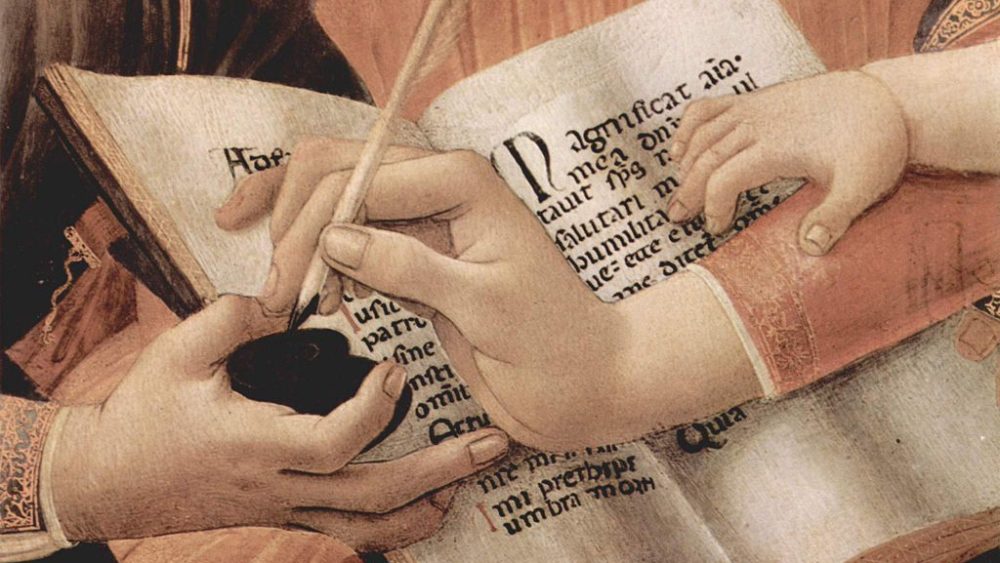Creatives take note: If you are tired of reading from a plain black Bible or a functionally designed app, then you’ll delight in the growing number of resources from Alabaster – a US-based start-up with a grand plan to make “The Bible Beautiful”.
Alabaster is reimagining the Bible for today’s visual culture by “exploring the intersection of creativity, beauty and faith” (according to its website). It has now designed seven books of the Bible as separate, carefully crafted “coffee-table books” since launching with a crowdfunding campaign in 2017.
These include the four gospels, as well as Romans, Psalms and Proverbs, using the New Living Translation. Each edition contains mostly original, evocative photos and strategically placed text with “thoughtful design” – all presented on top-quality paper and wrapped in a “soft-touch aqueous” cover. The result is a Bible that looks more like an “indie” magazine or art catalogue.
Other products on offer include artwork (somewhat quirky framed photos based on biblical themes) and notebooks, ready to record your insights as you read through the Bible books. There are also a few digital resources including “readings” (essentially a blog) and two e-books designed to “guide your creative practice and grow your faith”: A Liturgy for Creatives and On Becoming Creative.
Alabaster is the brainchild of Bryan Chung, an artist, photographer and campus minister at an art and design college, along with Brian Chung (that’s right, same name, different spelling), who is a designer and also involved in university ministry.
The pair describe their aims in the Alabaster Kickstarter campaign video:
“We live in a visual world. Social media, like Instagram and Snapchat, are part of our daily life routines. Our websites, our technology, our spaces, they are all becoming more aware of design. And because of this, I think the question of what is beautiful is becoming increasingly important …
“Our culture is changing; however, our Bible design has relatively remained the same. Similar to the old Renaissance artists who looked at the Scriptures and created these beautiful pieces of art from them, we wanted to do the same, and we asked ourselves, what would that look like today?”

Alabaster’s “Bible Beautiful” books Alabaster
While popular belief is that print is dead, according to Alabaster it is “very much alive.” The pair hope their coffee-table Bibles serve as conversation starters that might encourage non-believers to start reading the Bible.
It’s a genre that others are also tapping into, with She Reads Truth creating a suite of beautifully designed hard copy resources to sit alongside its digital offerings. And in a similar way, Alabaster is also still using social media as a key part of its marketing strategy, with many people sharing images from their Bibles on Instagram.
This ambitious start-up is attracting attention, even from secular media, with the Chungs being interviewed for Yahoo Finance this month. Here Brian Chung explained his personal reasons behind the plan to “revamp the Bible for Millennials” – a plan that had as much to do with accessibility as aesthetics:
“I didn’t grow up Christian; I grew up in a Buddhist household. And I remember when I first got my Bible as a Christian … It was sort this black/dark purple. I was really excited about it, but I didn’t know where to begin. I was a little intimidated by it. The first couple of pages weren’t even about the story itself and the text was condensed. It just made it a hard reading experience.
“So what makes Alabaster different is that we weave beautiful imagery and thoughtful design into the text of the Bible. We think about typography. We think about minimal space. As Christians, we know that the story of Jesus is beautiful, and so we wanted to create a beautiful reading experience.”
Bryan Chung (the photographer) adds further insight into the choice of photographs used in the Kickstarter video: “We also wanted to make images that capture the emotional impact of what the passages are talking about – some are literal and some are abstract. And these images are meant to be wrestled over, interacted with. As you look at the image and read the text side by side, ultimately we hope it creates a deeper interaction with God.”
He adds: “We believe that great art has always done more than tell a quick, literal message. Great art creates dialogue; it makes us think.
And like all great art, it also takes time to create. In light of such a laborious design process, it’s little wonder that Alabaster has only produced seven of the 66 books of the Bible so far. However, they did promise on Yahoo Finance that new products are on the way. Good things come to those who wait.
Email This Story
Why not send this to a friend?


